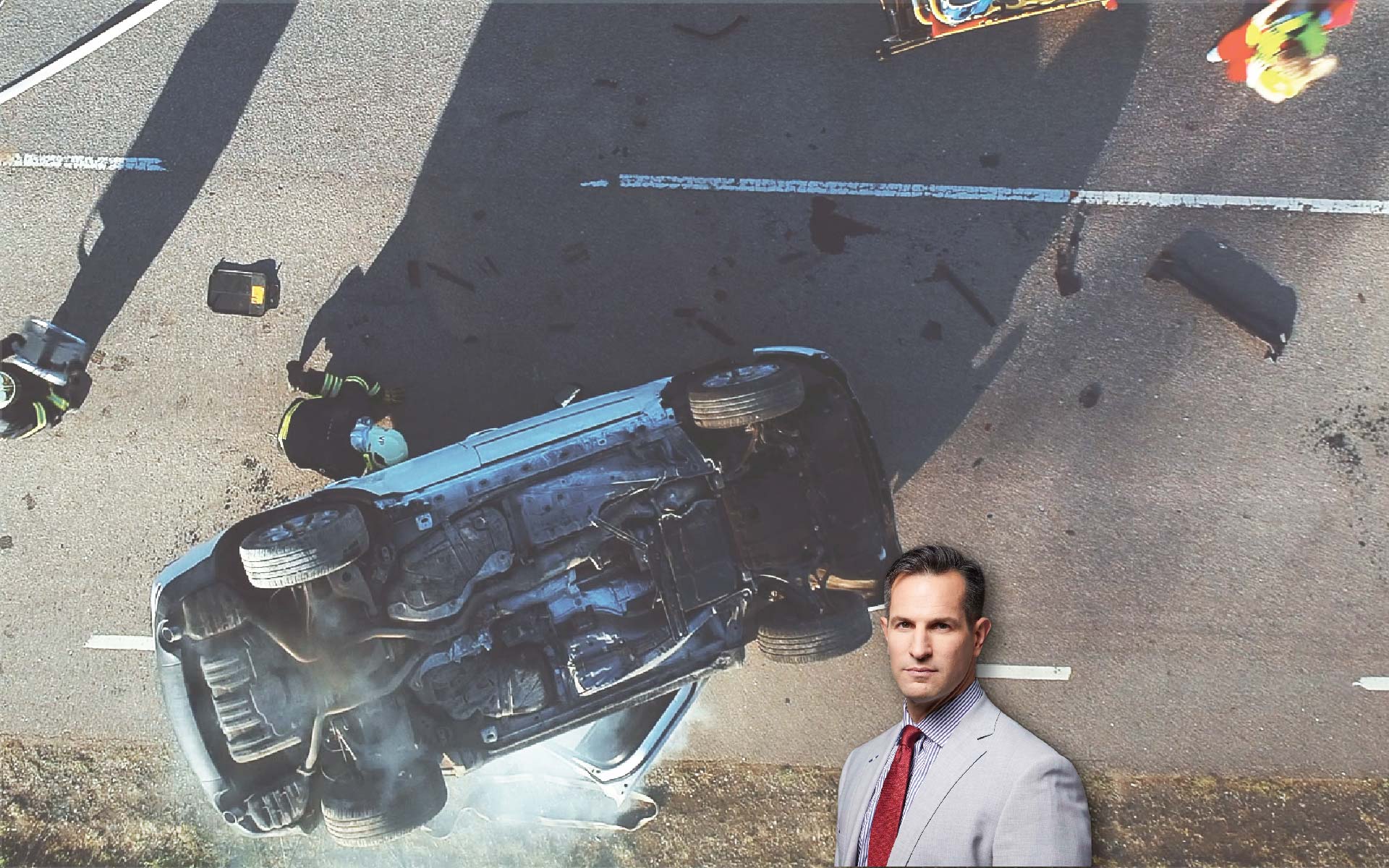Along with the festivities the holiday season brings, the darker winter months and added social obligations can wreak havoc on drivers’ typical sleep patterns, putting them at risk for fatigued driving. Fatigued driving, also known as drowsy driving, is a result of not getting enough sleep or failing to get enough quality sleep to the point of physical or mental exertion that impairs driving performance.
Fatigued Driving Statistics
A 2004 report from the Centers for Disease Control (CDC) on Drowsy Driving and Risky Behaviors found that fatigued driving is a direct factor in as many as 25 percent of fatal motor vehicle accidents each year. Most of these accidents occur on rural roads and highways and only involve one driver without any passengers in a vehicle that runs off the road at a high rate of speed without an attempt to brake.
More than four percent of adult respondents to a survey reported having fallen asleep while driving at least once in the past 30 days. There’s no doubt that fatigued driving threatens the health and safety of the public.
The American way of life often doesn’t encourage the natural biological need all humans have to sleep. With an emphasis on work productivity, longer commute times, and electronic connectedness, more Americans than ever are experiencing sleep deprivation.
In a survey of U.S. workers, 37 percent reported getting less than the recommended minimum seven hours of sleep per night. Long hours at work, a new baby at home, shiftwork, and lengthy commutes put workers at an increased risk for fatigued driving, which leads to impaired cognition, performance, and motor vehicle accidents.
Certain professions are more vulnerable to drowsy driving, including truck drivers and medical professionals or industry workers who cover long, overnight shifts on a regular basis. Adults who reported getting less than six hours of sleep per day or those who unintentionally fell asleep during the day are at heightened risk for accidents caused by fatigued driving.
The CDC’s National Institute for Occupational Safety & Health (NIOSH) found that the level of impairment with fatigued driving is similar to that of alcohol impairment. Research shows that being awake for 18 consecutive hours or more is equivalent to a blood alcohol content of 0.08, the legal threshold for intoxication.
It’s difficult to pinpoint exactly how many of the motor vehicle crashes or fatalities that occur annually in the United States are caused as a result of drowsy driving. Investigations of these accidents rely heavily on police and hospital reports and are often not conclusive. However, the National Highway Traffic Safety Administration (NHTSA) estimates that 91,000 reported crashes involved fatigued driving in 2017, leading to 50,000 injuries and 800 deaths.
A 2005 study suggested that three out of four commercial vehicle drivers have made at least one driving error as a direct result of being fatigued, and the Large Truck Crash Causation Study of 2002, sponsored by the Federal Motor Carrier Safety Administration (FMCSA) found that 13 percent of commercial drivers who were involved in a wreck were fatigued at the time of the accident.
Most experts on the matter of motor vehicle safety agree that the number of accidents attributed to drowsy driving is vastly underestimated. More thorough training of accident investigators in determining the role that fatigue plays in accidents and near-accidents is needed for a better understanding of how to prevent these types of crashes.
Causes
The causes of fatigued driving are all connected to lack of sleep or poor quality of sleep, issues that can be remedied with appropriate education or medical intervention.
- Being awake for too many consecutive hours doesn’t allow the body time to reset itself, leading to a lack of concentration and delayed reaction times.
- Not getting enough sleep over multiple days– Many people believe that sleep can be made up once they find the time to do it. However, sleep deprivation is a cumulative condition, and it can take several days or weeks of regular, quality sleep to correct deficits.
- Time of day- The human urge to sleep is strongest in the early morning hours. When there is a disruption of the sleep-wake cycle, the body becomes confused about when to sleep and when to be alert. Fatigue-related accidents occur most often between midnight and 6 a.m. or late in the afternoon when the circadian rhythm experiences a natural dip.
- Long or monotonous drives- Long periods of inactivity can cause a driver to zone out, which makes them high risk for potential fatigue-related issues.
- Health factors- Sleeping disorders and certain medications can cause fatigue or drowsiness while on the road.
Recognizing the signs of fatigued driving in self and others can save lives. These include frequent yawning, heavy eyelids, and blurred vision, as well as crossing over lanes or hitting rumble strips on the shoulder of the road.
Effects
The effects of fatigued driving include nodding off, also referred to as microsleeps. Microsleeps are brief losses of consciousness that can last four to five seconds or up to 30 seconds before jerking awake. A driver could potentially travel more than 100 yards while experiencing a microsleep, enough time to have an accident and not realize it.
Drowsy driving slows a driver’s reaction times to adjust to road conditions, other drives or pedestrians and leads to poor decision making, drifting from designated lane, and tunnel vision, where a driver loses his or her ability to sense action in the periphery. Some fatigued drivers even report a loss of memory of the last few miles they’ve driven before an accident.
Berry Law’s Team Provides You With Multiple Attorney Perspectives
Prevention
Prevention of fatigued driving often focuses on one of four areas: personal responsibility, employer initiatives, the use of monitoring technology, and medical interventions. Individual drivers are in the best position to prevent accidents caused by falling asleep at the wheel.
- Get enough sleep- The minimum number of recommended hours of sleep for an adult in a 24-hour period is seven to nine. Teenagers require even more, and are at a stage of life where they often don’t get enough, putting them at increased risk for fatigued driving. Whether a driver is heading out for a morning commute or a long road trip, he or she should plan to sleep the recommended number of hours before hitting the road and advise young drivers to do the same. Getting enough sleep is the best cure for fatigued driving.
- Eat regular meals- Skipping meals or eating at unusual times can lead to fatigue, especially on the road. A light snack can lead to better rest and fewer feelings of drowsiness than a heavy meal.
- Plan activities around sleep- Make sleeping a priority and plan activities around the biological need to sleep.
- Create an environment conducive to sleep- A cool, dark, quiet room free from electronic devices will provide the best sleep for most individuals.
- Avoid drinking alcohol before driving- Alcohol amplifies the effects of drowsiness and increases driving impairment, especially when paired with some prescription or over-the-counter medications. Avoid drinking during peak sleepiness hours from midnight to 6 a.m. or late in the afternoon.
- Know medication side effects- Check labels on prescription and over-the-counter medications for side effects that include drowsiness. While using one of these medications, consider taking public transportation or ask a doctor about the increased risk of fatigued driving. Medications like opioids, pain relievers, codeine, antihistamines, and muscle relaxants can cause sleepiness, blurred vision, dizziness, slowed movements, fainting, lack of focus, nausea and excitability.
While some of these medications only affect the body for a short time, the effects of others can last several hours or into the following day. This is especially true of sedative hypnotic medications containing the drug zolpidem, such as Ambien and Ambien CR. These medications are often prescribed by doctors to help a patient sleep, but in their extended-release form, they can affect the human body during the following morning’s commute as well.
Don’t assume that a drug is safe to take while driving simply because it’s available over-the-counter. Many allergy medications that contain antihistamines can affect the ability to drive safely. Combined with alcohol or sleep medication, the sedative effects of antihistamines increase.
Using cannabidiol (CBD) products can also be dangerous while driving because they can cause sleepiness, sedation, and lethargy.
Employers can implement policies for workers at high risk of fatigued driving accidents.
- Limit allowable overtime- Placing limits on the amount of overtime and the allowable maximum number of consecutive shifts an employee can work can help prevent occupational mistakes, as well as fatigue-related accidents in the case of truck drivers, medical professionals and other shift workers.
- Ensure sufficient staffing- Employees who are unable to take breaks due to staff shortages are at increased risk for fatigue and fatigue-related accidents. Doctors and nurses who have the opportunity to take rest breaks and short naps during shift work are less likely to make fatigue-related mistakes than those who are run ragged.
- Encourage checklists and reporting- When workers are aware of the symptoms of fatigue, they are more likely to recognize their own fatigue and that of coworkers. Proving and requiring the use of checklists and self-reporting can encourage workers to rest when fatigued.
Advancements in technology have provided tools for commercial drivers to combat fatigued driving. However, their perceived cost may be a roadblock to implementing use by trucking companies and private drivers.
- In-vehicle monitoring systems- Installed in commercial vehicles, these systems detect signs of possible fatigue, such as drifting into another lane and alert the driver to pull over and rest.
- Driver monitoring- Watches and other wearable devices can monitor the biological condition of a driver and recognize when they are approaching fatigue levels before an accident can occur.
Increased public awareness, along with medical intervention when a sleep disorder may be present can save lives and prevent fatigued driving. Medical professionals can help by doing the following:
- Provide education- Giving patients information on sleep health and fatigue management and encouraging them to get the recommended number of hours of sleep each day is a first step to positive sleep health.
- Screening and management- When patients report that they are still fatigued despite sleeping the minimum seven to nine hours each day, medical professionals can refer them for evaluation for a sleep disorder like sleep apnea that may be preventing quality rest and leaving them fatigued.
If a driver is experiencing fatigue while driving, he or she should immediately pull over and rest before continuing. Don’t count on tricks like smoking, opening windows, turning up the radio, or drinking coffee to combat fatigue. The effects of coffee or energy drinks only last a short time and can give a driver a false sense of security, leading them to get behind the wheel again before they are fully rested.
Instead, take a 15 to 30-minute nap. Short naps are more effective at restoring energy than anything else. The only real cure for fatigue is to sleep.
Contact Our Firm if You Were Injured in a Fatigued Driving Collision
The actions of fatigued drivers who cause an accident can be considered negligent if the driver knowingly operates a motor vehicle while drowsy. Injuries to others on the roadway can occur when a driver drifts into another lane or collides with an oncoming vehicle. For those impacted by drowsy driving, the consequences can be far-reaching, impacting physical health and financial security.
A personal injury attorney can’t change the impact an accident has on an individual or a family, but they can help advocate for the compensation to which an injured party is entitled. The attorneys at Berry Law have the experience to navigate personal injury claims so that their clients can focus on healing.



